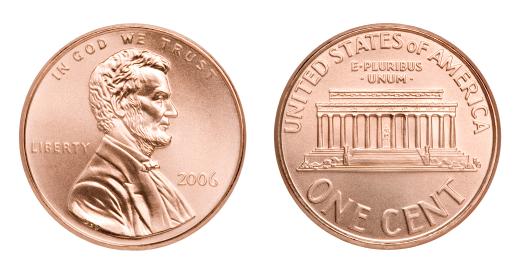Progressive stamping is a method of machining finished pieces by feeding sheet metal, typically from a roll, through a series of stations. These stations may include stamping, bending, cutting, and other shaping techniques, and are carried out in a specific order along the path of the sheet metal. All the stations along the path may be machined into a single die. In such a case, each time the die descends, it completes all of the stations simultaneously, but on separate pieces and in varying levels of assembly. The final station is typically the cutting of the finished piece from the supporting “web” of sheet metal remaining from the previous steps.
There are several types of machining that may be involved in progressive stamping. One example is coining, which takes its name from the manufacture of currency. It may be used in order to create a precision relief on the surface of a piece. This will typically be a later station along the sheet metal’s path due to its nature. Prior to coining, other types of stamping, such as punching and deep drawing, may take place.

In order to create the desired shape, a piece may be subjected to a series of punches throughout the progressive stamping process. These punches may create cuts in the object in a process called "piercing." Punches can also create cuts around the object in a process called "blanking."
A piece may also be submitted to deep drawing during the progressive stamping process. In deep drawing, the die presses the sheet metal into a receiver rather than cutting it. The metal is bent and stretched, creating an indentation. In order for the process to be considered deep drawing, the typical standard is that the depth exceeds the diameter.

Bending is distinguished from deep drawing in that it typically creates a "U" or channel shape that is open on either end. By performing a series of bends at separate stations along a progressive stamping path, the sheet metal may be shaped into a three-dimensional piece. An example of the end result of bending is the tab on top of a beverage can. Depending on the piece, bending is likely to be one of the final stations, as many of the other processes to be carried out are most easily accomplished against a flat surface.
